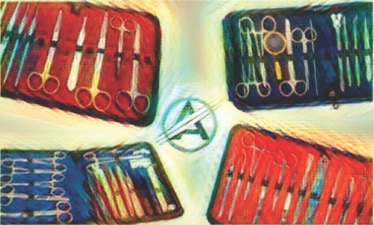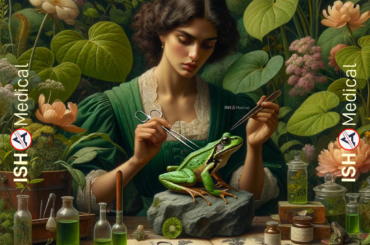W
What is a Dissection Box?
A dissection box, also known as a dissecting kit, is a set of tools used primarily for dissecting organisms (like frogs, earthworms, and even plants) to study their internal structures and how they function. It’s like a toolbox, but instead of hammers and nails, it contains instruments that help in cutting, probing, and examining the tissues of plants and animals.
Types of Dissection Boxes:
Explore various types of dissection boxes designed for precise scientific studies and experiments. Ideal for education and research needs
-
-
Basic Student Kit:
-
This is the most common type used by students in schools and colleges. It includes:
- Scalpels: For making precise cuts.
- Forceps: Tweezer-like tools for grasping or holding tissues.
- Scissors: For cutting tissues.
- Needles: For pointing out or teasing apart specific structures.
- Probe & Seeker: To explore or point out specific parts.
- Dissecting pins: To hold the specimen in place.
- Ruler: To measure parts of the specimen.
-
-
Advanced Research Kit:
-
Professional researchers and higher-level students use this kit. Along with the essential tools, it might include:
- Micro dissecting tools: For highly delicate work, often under a microscope.
- More specialized scissors, like Mayo, Metzenbaum, or Iris scissors.
- Multiple forceps, such as toothed, serrated, or smooth forceps.
- Different types of scalpels and blades for varied incisions.
- Blunt probes, curved needles, and more.
- Bone cutters: For dissecting animals with more rigid structures.
-
-
Plant Dissection Kit:
-
While many of the tools overlap with animal dissection kits, these are specifically designed for plants and may include:
- Leaf razors: For slicing through plant tissues.
- Cork borers: For cutting cylindrical pieces out of softer plant materials.
-
-
Veterinary Dissection Kit:
-
Designed for those in the veterinary field, these kits are equipped to handle dissections of larger animals and may contain:
- Larger, more durable scalpels and scissors.
- Suture tools and materials.
- Organ clamps and hooks.
-
-
Specialty Kits:
-
Dissection kits are tailored for specific subjects, such as marine biology or entomology (the study of insects). These might have unique tools for handling and studying particular organisms.
Using a dissection box requires careful attention to safety. Always ensure tools are clean and sharp, as dull instruments can lead to accidental slips or cuts. Before starting, put on safety gloves and goggles to protect your skin and eyes from potential splashes. Handle instruments like scalpels and scissors with care, holding them by their handles and never pointing them at others. After use, clean each tool thoroughly and return it to its designated spot in the box. Most importantly, always supervise students or beginners during dissection to ensure everyone’s safety.
ISAHA Medical
Conclusion:
A dissection box is more than just a collection of tools—it’s a gateway to understanding the intricacies of life. Whether you’re a curious student or a dedicated scientist, the right dissecting kit can open up a world of exploration and learning. Always use these tools with care, respect for life, and proper supervision.


